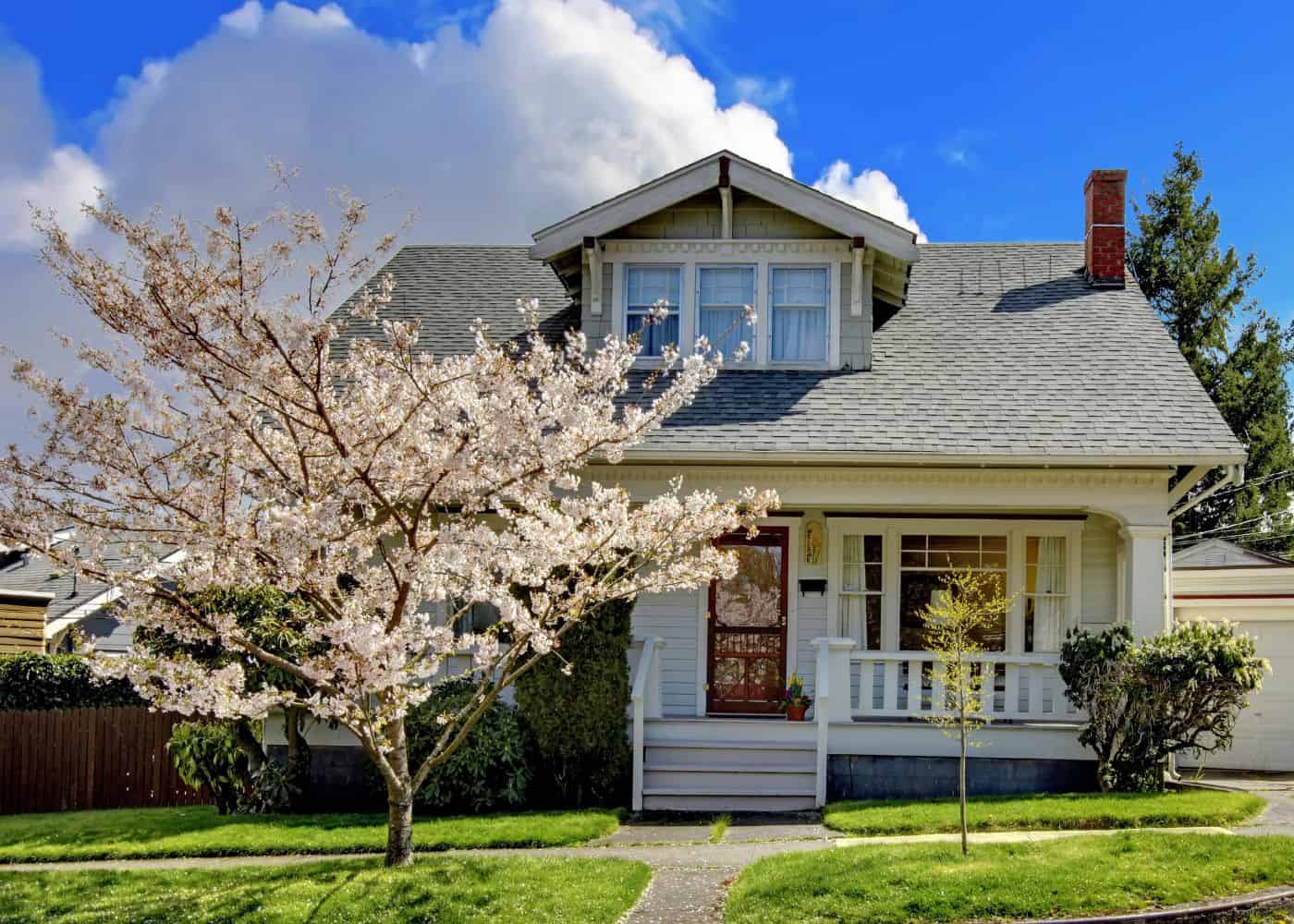Cherry trees are a long-term garden investment, requiring patience and consistent care. One part of this care routine may involve fertilizing, depending on the soil you have planted in.
Cherry trees planted in high-quality soil with plenty of nutrients typically don’t need additional fertilizers. However, if your tree needs a boost or a soil test indicates a deficiency, fertilize in spring with a balanced fertilizer or one higher in the nutrient the soil is deficient in. Water immediately after feeding and avoid overfertilizing to limit potential damage.

About cherry trees
Cherry trees are part of the Prunus genus, along with a number of other popular fruits including plums, peaches and even almonds. These trees are native to nothern areas across Asia and Europe, depending on what species you’re dealing with.
Cherries fall into two categories: sweet cherries (Prunus avium) and sour cherries (Prunus cerasus). These two varieties produce delicious fruits that are eaten fresh or used in numerous dishes, from pies and preserves to classic cocktails.
Cherry trees aren’t just grown for their fruit, but also for their ornamental value. Their stunning flowers are beloved worldwide and make a great addition to home gardens.
Fertilizer explained
Fertilizers contain a combination of nutrients – primarily nitrogen, phosphorus and potassium (NPK) – that plants require to thrive. Nitrogen boosts the growth of lush, green leaves, while phosphorus aids in root development and the production of flowers. Potassium has many jobs, contributing to the overall well-being of the plant.
All these nutrients, along with secondary and micronutrients, work together to help plants grow successfully.
Nutrients are naturally present in soil. But over time, plants use up these nutrients and need them to be replenished. That’s where fertilizers come in.
You’ll find these nutrients in both organic and synthetic fertilizers. Organic fertilizers come from things like compost and manure, while synthetic fertilizers are manufactured to deliver certain results, depending on what you’re growing.

Do cherry trees always need fertilizer?
Cherry trees can benefit from regular applications of fertilizer. However, this is not always necessary, depending on where you have planted.
If your cherry tree is planted in nutrient-rich and balanced soil, you might not need to fertilize at all. Starting with a good soil foundation will set your tree up for successful long-term fruiting without any extra intervention from you.
The health of the tree is another factor to consider. Signs of declining health – such as yellowing leaves, stunted growth, or reduced fruit yield – can signal a need for some extra nutrition in the form of fertilizers. Similarly, if a soil test reveals nutrient deficiencies, it’s time to consider fertilizing.
Stage of growth can also impact fertilizing. While cherry trees typically don’t need feeding soon after planting when they are young, you may want to give them a nutrient boost a few years later when they actually start producing fruit.
An analysis of your tree, the season, and the soil will help you determine whether fertilizing is necessary and when.
The best time to fertilize cherry trees
The optimal time to fertilize if you are doing so this year is usually in early spring as new growth begins to appear. This gives the tree a nutrient boost when it’s starting new leaf growth and gearing up for flowering and fruiting. A well-timed fertilization in spring equips the tree with the necessary resources to maximize the growing season.
Avoid fertilizing in late summer or fall, as it can spur new growth that may not have sufficient time to harden off before winter sets in, leaving the tree vulnerable to frost damage.

What fertilizer do cherry trees need?
Cherry trees typically grow best when given a balanced fertilizer to cover all their nutrient needs. These fertilizers contain equal parts nitrogen, phosphorus, and potassium, facilitating leaf growth, root development, and fruit production.
But if you are noticing issues with growth, it’s best to conduct a soil test first before choosing your fertilizer. This test will tell you if there are any nutrient deficiencies, allowing you to choose a fertilizer that compensates for these deficiencies.
How to fertilize
Fertilizing a cherry tree is a multi-step process. You’ll need to start by choosing your fertilizer based on your soil test results. It could be a balanced 10-10-10 fertilizer, or something with a different ratio to compensate for specific nutrient shortages.
Next, spread the fertilizer evenly around the base of the tree extending out to the circumference of the tree’s canopy. This region is where the feeder roots are located, and these roots will uptake the nutrients from the fertilizer and transport them around the plant.
Water immediately after fertilizing. This helps dissolve the fertilizer, aiding its transportation down to the roots. Water slowly and deeply to allow the nutrients to reach all the roots.
An excess of fertilizer can harm the tree by burning the roots, so it’s always safer to underfertilize than overdo it.







